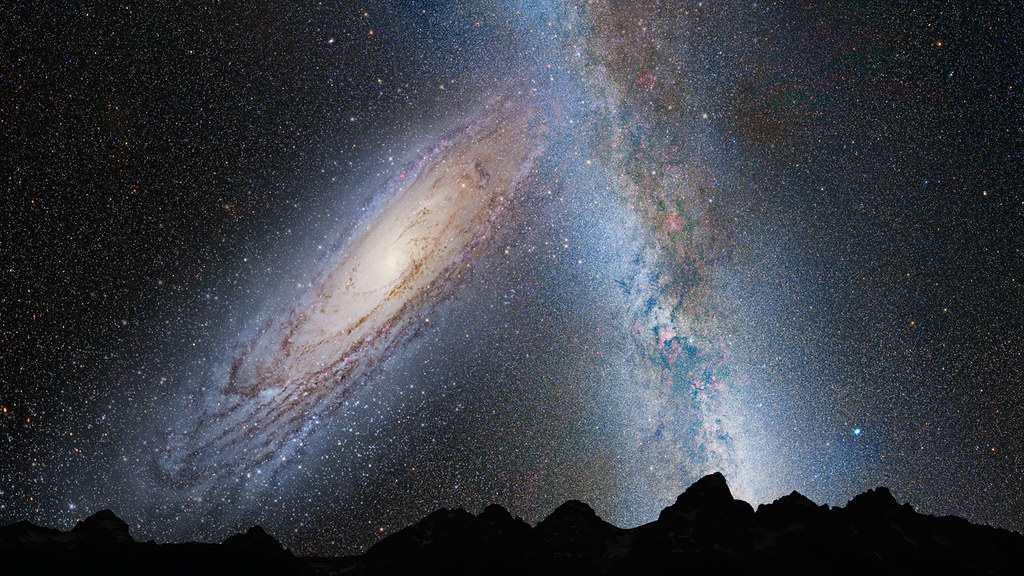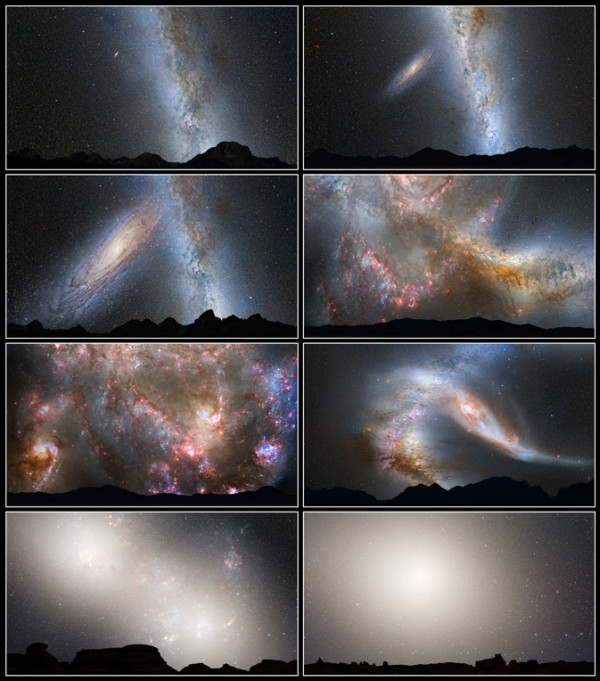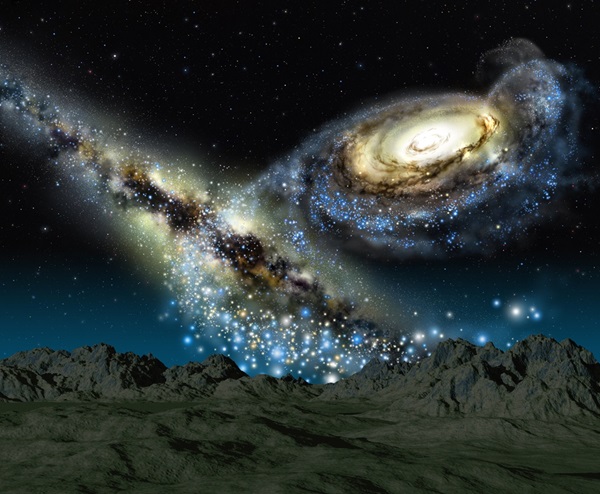People are curious about What will happen when the Milky Way and Andromeda galaxy collide? The fact is that what happens when galaxies collide is primarily determined by the makeup and size of the galaxies involved.
The easiest way to think about galaxies colliding is to imagine them merging rather than colliding. Planets and stars are not going to collide. Because galaxies have a lot of space, it’s more probable that stars will collide. Scientists prefer to visualize the collision as two swarms of bees moving in the opposite direction. Our galaxy is on the verge of colliding.
The Milky Way will collide with the swiftly approaching Andromeda Galaxy in around 4.5 billion years, and astronomers are still trying to forecast what will happen when the two galaxies clash. It’s been known for a while that a collision between our galaxy and the Andromeda Galaxy is unavoidable.
Andromeda was approaching, as measured by the Doppler shift of its spectral lines, but such measurements can only tell you about motion directly towards or away from the observer. To determine whether we were in for a direct strike or a close call, researchers looked at the velocity of Andromeda’s satellite galaxies, which revealed that Andromeda’s course made collision unavoidable.
Related: What is the relationship between Globular Clusters and Milky Way?
Would the Andromeda galactic collide with the Milky Way at some point?
For decades, astronomers have predicted that our own galaxy, the Milky Way, would collide with the next-nearest spiral galaxy, in the direction of the constellation Andromeda, at some point in the future. Our sun will most certainly be blasted into a new area of cosmic space when they clash.
Is there a more specific figure for it somewhere down the road? According to scientists, it will happen in four billion years. NASA researchers claim they can now pinpoint the exact timing of the giant galaxies colliding.
They derived this figure from meticulous NASA Hubble Space Telescope observations of the speed of the Andromeda galaxy, generally known as M31. According to the scientists:
The galaxy is currently 2.5 million light-years away, but due to the mutual gravitational attraction of the two galaxies and the unseen dark matter that surrounds them both, it is relentlessly plunging toward the Milky Way.
Our Milky Way will undergo a major makeover when this occurs, according to these astronomers. According to these scientists, for example, The sun will most likely be blasted into a new sector of our galaxy, but our planet and solar system will not be annihilated.
Also read: Astronomers have discovered a galaxy that is devoid of dark matter
The Earth is on the verge of colliding with the Galaxies; here’s what will occur.
Our home galaxy is about to face off against the Andromeda Galaxy, which is now speeding at us at 250,000 mph. When these two huge galaxies collide, Earth will be caught in the midst of the biggest cosmic event in our planet’s history, according to astronomers.
Fortunately, astronomers believe that Earth will survive, but it will not be completely unaffected: the crash will take place directly in front of our eyes, altering the night sky in ways that no human has ever seen before.
Also read: What is the evidence for Dark Energy in the Universe?
The Milky Way is on the verge of colliding with Andromeda, and we already know how it will look
Gravity, in the end, is the deciding factor. In around five billion years, our Milky Way galaxy will collide with our nearest massive neighbor, the Andromeda galaxy.
There’s no stopping it, but scientists can forecast what will happen, and we can even watch previews by examining past galaxy mergers, due to powerful new telescopes.
Astronomers Aaron S. Evans of the University of Virginia and Lee Armus of the California Institute of Technology predict how our two galaxies will merge in a rush of gravitational waves, producing intense new star-forming areas and smashing their central black holes together. We won’t be able to see it, but we will be able to see the collisions of other galaxies.
Conclusion
This would be breathtaking to us Earthlings. The new supergalaxy’s brilliant center would light up the night sky. The two supermassive black holes at the heart of these galaxies would eventually get so close to merging that they would fuse. The gas absorbed by this massive black hole would generate a brilliant quasar in the galaxy’s core.
Here on Earth, we are treated to yet another spectacular show. Regrettably, our planet will not survive long enough to witness any of it. The Sun would have already transformed into a Red Giant and eaten up the whole Earth by the time Andromeda collides with the Milky Way.


